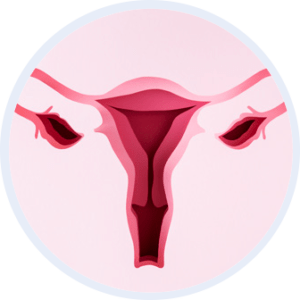
Unveiling Fibroid Bleeding Symptoms
Fibroids, those noncancerous growths that reside in the uterus, affect millions of women worldwide. While some women experience no symptoms at all, others grapple with a range of uncomfortable and disruptive effects, including abnormal bleeding. Understanding the bleeding symptoms associated with fibroids is crucial for seeking timely medical attention and managing the condition effectively.
Heavy Menstrual Bleeding
One of the most common bleeding symptoms associated with fibroids is heavy menstrual bleeding, also known as menorrhagia. This occurs when periods are significantly heavier than usual, lasting longer and requiring more frequent changes of sanitary protection. The increased bleeding is attributed to the presence of fibroids altering the normal uterine lining and disrupting the menstrual cycle.
Bleeding Between Periods
Intermenstrual bleeding, or metrorrhagia, is another common symptom of fibroids. It refers to bleeding that occurs between regular menstrual periods, often without any warning signs. This unexpected bleeding can be unsettling and disruptive to daily routines.
Spotting
Spotting, characterized by light irregular bleeding, is another symptom that may be experienced by women with fibroids. This can manifest as a small amount of blood or pink-tinged discharge between periods or after intercourse.
Impact on Quality of Life
The bleeding symptoms associated with fibroids can significantly impact a woman’s quality of life. Heavy bleeding can lead to anemia, a condition characterized by low red blood cell count, causing fatigue, weakness, and shortness of breath. Intermenstrual bleeding and spotting can disrupt daily activities, cause anxiety, and interfere with intimacy.
When to Seek Medical Attention
While some women may experience mild bleeding symptoms, others may find that fibroids cause significant discomfort, interfere with their daily lives, and affect their overall well-being. If you are experiencing any of the following, it is important to consult a healthcare provider:
- Heavy menstrual bleeding that requires changing tampons or pads every hour or two
- Prolonged menstrual periods lasting longer than eight days
- Bleeding between periods or spotting
- Pelvic pain or pressure
- Pain during intercourse
- Difficulty emptying the bladder or feeling pressure on the rectum
- Anemia symptoms such as fatigue, weakness, or shortness of breath
Diagnosis and Treatment Options
Diagnosis of fibroids typically involves a pelvic exam, imaging tests such as ultrasound or MRI, and sometimes a biopsy to rule out other conditions. Treatment options for fibroids vary depending on the size, location, and severity of symptoms. Options may include:
- Non-invasive treatments: These include medications such as hormonal contraceptives or nonsteroidal anti-inflammatory drugs (NSAIDs) to manage pain and bleeding.
- Minimally invasive procedures: These involve techniques such as uterine artery embolization (UAE) or uterine fibroid embolization (UFE), which involve shrinking or removing fibroids through small incisions.
- Surgery: In some cases, a hysterectomy, the removal of the uterus, may be recommended for women with large or multiple fibroids that are causing significant symptoms.
Living Well with Fibroids
While fibroids can cause discomfort and disrupt daily life, many women with fibroids live healthy, fulfilling lives. By understanding the bleeding symptoms, seeking timely medical attention, and exploring appropriate treatment options, women can effectively manage their fibroids and regain control of their health and well-being.
United Fibroid & Vascular Centers Can Treat Bleeding Symptoms From Fibroids
If you’re looking for a minimally invasive vascular procedure to shrink or eliminate your fibroids, then uterine fibroid embolization, or UFE, is worth considering. It cuts off the blood flow to the fibroids and reduces symptoms in 90% of women who undergo the procedure.
Uterine fibroid embolization can help you work toward a happier and healthier future that doesn’t involve harsh fibroid symptoms. At United Fibroid & Vascular Centers, we want to be by your side during the journey.
If you’re ready to explore a safe and effective uterine fibroid procedure, it’s time to schedule a consultation with us.
Speak to a dedicated patient specialist today.
Call Toll-Free 813-445-4707
90% of women have a positive resolution of fibroid related symptoms after their UFE treatment.
Our vascular board-certified physician will discuss with you whether UFE is a good treatment option for you taking into account your lifestyle, type, size, and position of the fibroids, and any risks they may present.
